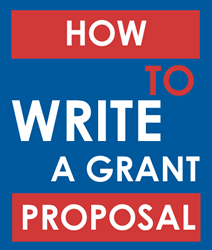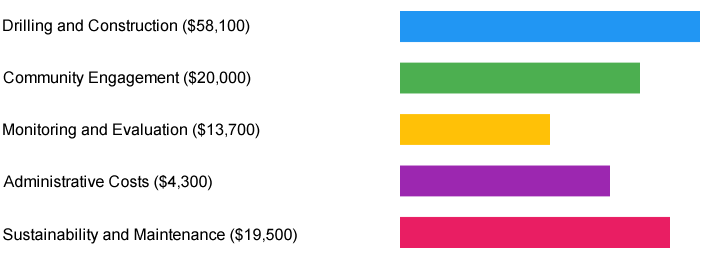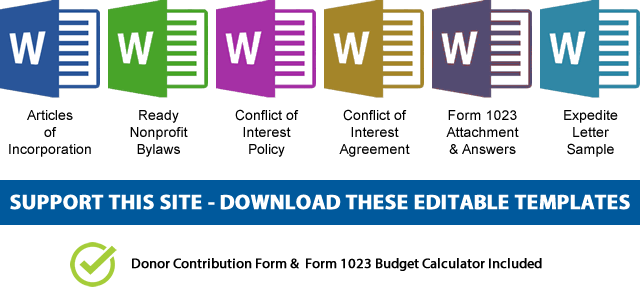How to write a winning grant proposal for your Nonprofit Organization
 Grant writing is a crucial component of nonprofit fundraising. Grants are a major source of funding for nonprofit 501c3 organizations, enabling them to pursue their mission and achieve their goals. By applying for and receiving grants, nonprofits can reduce their reliance on individual donations and other sources of funding. Grants can also provide larger and more consistent funding streams, allowing nonprofits to plan and budget more effectively.
Grant writing is a crucial component of nonprofit fundraising. Grants are a major source of funding for nonprofit 501c3 organizations, enabling them to pursue their mission and achieve their goals. By applying for and receiving grants, nonprofits can reduce their reliance on individual donations and other sources of funding. Grants can also provide larger and more consistent funding streams, allowing nonprofits to plan and budget more effectively.
A well-written grant proposal can be the difference between receiving funding and being denied. In this article, we will take a look at the process of researching, outlining, and writing a successful nonprofit grant proposal that can help you achieve your goals.
The first step in writing a successful grant proposal is research. Understand the mission and the needs of potential funders and align your project with their interests. Once you’ve identified suitable funding sources, carefully review their grant guidelines before starting your application. Looking at sample applications can also provide insights into effective approaches for specific grants, but remember that each organization has its distinct priorities and evaluation criteria.
The sample grant proposal with tips are at the bottom of this page but let’s cover the basics of grant writing first.
After completing your initial grant research, begin outlining your project narrative. This should include:
- Project Title
- Abstract/Summary
- Need Statement
- Goals
- Objectives
- Methods
- Evaluation Plan
- Budget
- Sustainability Outline
- Key Messages
A grant proposal is different from a nonprofit business plan. Keep your grant narrative simple, using persuasive language and focusing on the benefits of your project. Clearly articulate necessary actions, responsible parties, and timelines. Incorporating strong visuals can enhance your proposal’s impact. Having someone else review your proposal is crucial for clarity and effectiveness. Ensure all required attachments are included before submission.
Remember, a well-crafted grant proposal not only demonstrates the value of your project but also shows your commitment and capability to accomplish it successfully. With attention to detail and alignment with funders’ priorities, your grant proposal stands a greater chance of securing the funding you need.
Define your goals
To write a winning grant proposal, it’s crucial to distinctly outline your objectives. Articulate the project’s purpose and justify why seeking funding is essential. Demonstrating the project’s necessity and potential success is key. This validation could involve providing substantial evidence like research data, statistics, or testimonials from affected individuals. Additionally, a clear timeline depicting project completion and its community benefits showcases a well-structured plan to potential funders, emphasizing its worthiness.
Research the funding organization and tailor your grant proposal
Understanding the mission, vision, and goals of the funding organization is paramount. This insight helps determine alignment between your project and their funding priorities. Analyzing the organization’s funding history, accessible through sources like their website or public databases, provides valuable information about previously awarded grants.
Adapt your proposal to meet the specific requirements of the organization. Thoroughly review their guidelines and ensure all mandated elements are addressed. Follow their prescribed format for submission, whether online, via mail, or otherwise.
Include a detailed budget with your Grant Proposal
Determine the necessary funds for your project’s successful completion before initiating the grant proposal. If you only need $100,000 to complete your project, don’t apply for a smaller or larger grants, you will get denied.
Incorporating a detailed budget in your proposal allows potential funders to visualize precisely where their investment will be allocated. A well-researched and carefully planned budget demonstrates your commitment to the project’s success.
Present a clear, concise proposal outlining project goals, methodologies, budget allocation, and anticipated outcomes. Address potential concerns or concerns that the funder might have. Include a detailed budget outlining all costs associated with your project, encompassing both one-time and recurring expenses.
Proofread your Grant Proposal and Seek Feedback
Carefully proofread your proposal to eliminate errors or typos that might detract from professionalism. Consider having a second person review your work to provide valuable feedback and catch any overlooked mistakes.
By adhering to these steps, your chances of securing funding for your community project significantly increase. Remember: thorough research, tailored proposals, meticulous proofreading, and adherence to guidelines are your pathways to turning your project into a reality.
Where to find 501c3 grants
If you are a 501c3 organization, there are grants specifically designed for your organization. There are a variety of websites and organizations that provide grants to 501c3 organizations. It is important to research the different types of grants available and determine which one best fits your needs.
Grants.gov is a great resource for those looking for grants specifically for 501c3 organizations. This is an official US government website and covers all Federal and State Grants.
The US Small Business Administration also offers grants specifically for 501c3 organizations supporting small businesses. This includes low interest loans as well as grants that can be used for capital projects, technology upgrades, and more.
The Foundation Center, now called Candid is an excellent resource for organizations searching for grants. Their website provides information on where to search, how to apply and other resources to help you find the right grant. In addition, they also provide free webinars and other training materials to help you learn more about the grant writing process.
Finally, many local organizations may have their own grant programs or be able to connect you with other organizations who offer grants specifically for 501c3s. It is important to do your research and contact local foundations or other granting agencies in your area to see what types of funding may be available to you.
Overall, finding the right grant for your organization can be difficult but there are a variety of resources available that can help make the process easier. Researching different sources of funding, attending training on grant writing, and connecting with other local granting agencies can all be helpful steps in finding the right grant for your organization’s needs.
Common Mistakes to Avoid
Forgetting to follow up – After you submit your grant application, don’t forget to follow up with the funding source to make sure they received it and to thank them for their time and consideration. This simple step can go a long way in making a good impression.
Giving up too easily – If you don’t get funded the first time around, don’t give up! Many people who are successful in getting grants have been rejected multiple times before finally landing a funding source. Keep trying, and eventually you’ll find success.
Nonprofit Grant Proposal Sample
Let’s say that your organization is seeking funding for drilling water wells in Mali, West Africa. Your grant proposal would look something like this. Every section has an explanation and sample text.
Grant Proposal for Water Wells Project in Mali, Wes Africa
Dear XYZ Foundation,
I am writing to submit a grant proposal on behalf of [Your Organization] for the implementation of a vital project aimed at drilling five water wells in Mali, Western Africa. We believe that this project aligns with the XYZ Foundation’s mission of supporting sustainable initiatives that improve the quality of life for underserved communities. We kindly request your consideration and support for this endeavor.
Executive Summary:
Explanation: The executive summary provides a concise overview of the entire grant proposal, highlighting the organization’s mission and background, the project’s objectives, methods, expected outcomes, the budget, and sustainability plans. It serves as a compelling snapshot of the proposal.
Our proposed project seeks to address the pressing issue of water scarcity and its detrimental impact on the communities of Mali. The project aims to drill five water wells in strategic locations, providing clean and accessible water to approximately [estimated number] individuals. Through this initiative, we aim to improve health, promote education, and empower communities to thrive.
Introduction:
Explanation: In the introduction section, provide a brief overview of your organization, including its mission and goals. Explain how the proposed project aligns with your mission and how it fits within your overall strategy. This section helps the reader understand the context and relevance of the project.
[Your Organization] is a [briefly describe your organization, including its mission and goals]. Our mission is to [mission statement]. By implementing this water wells project, we aim to alleviate the water crisis in Mali and contribute to sustainable development in the region.
Needs Assessment:
Explanation: The needs assessment section includes a detailed analysis of the target population or community, presenting relevant data and research to support the need for the proposed project. Describe the specific challenges or barriers faced by the community and identify any gaps in services or resources. This section establishes the rationale for the project by highlighting the existing needs. And most importantly, tell them how much you are seeking and how you’re going to spend it right off the bat:
Mali faces severe water scarcity, particularly in rural areas where communities lack access to clean water sources. This critical situation has detrimental effects on health, education, and economic opportunities. According to [reliable data source], [statistics on water scarcity in Mali]. The lack of accessible water sources hinders agricultural productivity, exacerbates poverty, and contributes to the prevalence of waterborne diseases. Our project aims to bridge this gap and address the pressing needs of these communities.

Project Goals and Objectives:
Explanation: Clearly state the overall goals of the project and the specific objectives that will be accomplished to achieve those goals. The objectives should be measurable and time-bound. Explain how the project directly addresses the needs identified in the needs assessment section. This section provides a clear roadmap for the project’s intended outcomes.
The overarching goal of our project is to provide sustainable access to clean water for communities in Mali. The specific objectives of the project include:
- Drill five water wells in strategically selected locations to ensure maximum coverage and accessibility.
- Train local community members on water well maintenance, ensuring long-term sustainability and ownership.
- Improve health outcomes by reducing waterborne diseases through the provision of clean water sources.
- Enhance educational opportunities by reducing the burden of fetching water, allowing children, especially girls, to attend school regularly.
- Promote economic growth and self-sufficiency by enabling agricultural activities through consistent access to water resources.
Project Design and Methods:
Explanation: In this section, provide a detailed description of the project’s design and methods. Explain the approach that will be used to achieve the project objectives, including specific activities, tasks, and timelines. Describe the roles and responsibilities of project staff and any partners or collaborators involved. This section outlines the project’s implementation plan.
To achieve our objectives, we have designed a comprehensive plan for drilling the water wells in Mali. The project will consist of the following key activities:
- Conducting site assessments and feasibility studies to determine suitable locations for drilling the wells.
- Engaging local stakeholders and community leaders to ensure their active participation and support.
- Collaborating with local drilling contractors to execute the drilling and construction of the water wells.
- Training local community members on proper maintenance and management of the water wells.
- Establishing water management committees within the communities to oversee the sustainable use of the wells.
Expected Outcomes and Impact:
Explanation: Describe the expected outcomes and impact of the project. Explain how the project will benefit the target population or community and how it aligns with the organization’s overall mission and strategy. Include any expected changes in behaviors, attitudes, or systems. This section emphasizes the significance of the project and its potential impact.
Through the successful implementation of this project, we anticipate the following outcomes and impact:
- Improved health and well-being of community members through reduced waterborne diseases and improved hygiene practices.
- Increased school attendance, particularly among girls, due to reduced time spent fetching water.
- Enhanced agricultural productivity and economic opportunities, leading to improved livelihoods.
- Strengthened community resilience and empowerment through active involvement in water management.
- Sustainable access to clean water for approximately [estimated number] individuals, improving their overall quality of life.
Evaluation Plan:
Explanation: Outline the evaluation plan for the project, including the methods that will be used to measure success and impact. Describe the data collection and analysis methods and explain how the results will be used to improve the project and demonstrate its impact. This section demonstrates the organization’s commitment to monitoring and evaluating project outcomes.
To effectively gauge the success and sustainability of the water wells project in Mali, we have devised a comprehensive evaluation strategy encompassing multiple facets:
- Quantitative Metrics:
- Water Accessibility: Regular measurement of the volume and consistency of water supply from the wells against baseline data.
- Health Impact: Tracking the prevalence of waterborne diseases in the targeted communities before, during, and after the project implementation.
- School Attendance: Comparing attendance rates, especially among girls, pre-and post-project to assess the impact of reduced water-fetching burdens.
- Agricultural Output: Monitoring crop yields and assessing any noticeable improvements resulting from enhanced access to water resources.
- Qualitative Assessments:
- Community Feedback: Conducting periodic surveys and focus group discussions to gather insights into community perceptions, challenges faced, and improvements observed.
- Stakeholder Engagement: Assessing the level of participation and engagement of local stakeholders and community members in managing and maintaining the water wells.
- Monitoring Mechanisms:
- Regular Site Visits: Scheduled visits by our team to the project sites for direct observation and assessment of the wells’ functionality, community involvement, and overall project progress.
- Data Collection Tools: Utilizing standardized data collection tools for consistent and accurate data gathering across all evaluation aspects.
- Long-Term Sustainability Assessment:
- Capacity Building Impact: Evaluating the effectiveness of training programs by assessing the locals’ ability to maintain and repair the wells independently.
- Community Empowerment: Gauging the establishment and functionality of water management committees to ensure sustained community ownership and involvement.
- Adaptation and Improvement:
- Real-time Adjustments: Implementing an adaptive management approach, allowing for alterations based on real-time feedback and unforeseen challenges during project execution.
- Lessons Learned: Conducting periodic reviews to identify best practices, challenges faced, and lessons learned to enhance future project planning and implementation.
Timeline and Milestones:
Preparation Phase (Month 1-2):
- Conduct initial site assessments and feasibility studies in Mali to identify suitable locations for well drilling.
- Engage with local communities, leaders, and stakeholders for input and support regarding the project.
Implementation Phase (Month 3-8):
- Begin drilling and construction of water wells in five selected locations, ensuring strategic placement for maximum community coverage.
- Simultaneously, conduct comprehensive training sessions for local community members on maintenance and sustainable management of the wells.
- Establish water management committees within the communities to oversee usage and maintenance.
Monitoring and Evaluation (Month 9-12):
- Conduct regular site visits by project team members to assess well functionality, community involvement, and any challenges faced.
- Initiate data collection on impact metrics including water accessibility, health improvements, school attendance, and agricultural output.
Post-Implementation Phase (Month 13+):
- Continue monitoring and evaluation efforts to assess the sustained impact of the wells on the community.
- Implement any necessary adjustments based on evaluation findings to ensure long-term sustainability.
- Develop a comprehensive sustainability plan involving local stakeholders for ongoing maintenance and community involvement.
Visual Aids or Infographics:
Maps:
[Include a map of Mali highlighting the proposed well locations, demonstrating the strategic placement for community coverage.]

Testimonials or Case Studies:
Success Stories:
“In a previous project conducted by [Your Organization] in [Region], access to clean water resulted in a 40% decrease in waterborne diseases, improving the overall health of the community.”
“Through sustainable water management practices taught by our organization, communities in [Location] experienced a 30% increase in agricultural yield, leading to economic growth.”
Case Studies:
[Present a detailed case study highlighting a specific community where your organization’s project led to sustained access to clean water, improved livelihoods, or community empowerment.]
Budget Breakdown:
Explanation: Provide a detailed budget for the project, including all expenses and sources of funding. Explain how the funds will be utilized and justify each expense. Include a budget narrative that provides additional context and detail for each item. This section ensures transparency and accountability in financial planning.
Budget Breakdown for Water Wells Project in Mali
| Budget Category | Cost (USD) |
|---|---|
| Drilling and Construction | |
| – Well drilling equipment and machinery | $25,000 |
| – Labor costs | $18,000 |
| – Materials | $10,000 |
| – Transportation | $8,000 |
| – Contingency Fund (10% of total cost) | $6,100 |
| Community Engagement and Training | |
| – Training sessions | $5,500 |
| – Educational materials | $3,000 |
| – Community meetings | $2,500 |
| Monitoring and Evaluation | |
| – Data collection tools | $4,000 |
| – Personnel | $6,500 |
| – Travel and accommodation | $3,200 |
| Administrative Costs | |
| – Office expenses | $2,800 |
| – Permits and administrative fees | $1,500 |
| Sustainability and Future Maintenance | |
| – Capacity building programs | $4,000 |
| – Creation of water management committees | $3,000 |
| Contingency Fund (5% of Total Project Cost) | $5,000 |
| Total Project Cost | $115,600 |
This table structure organizes the budget breakdown into specific categories and their associated costs, providing a clear overview for the proposed project’s financial requirements.
[Develop an infographic summarizing key project data, including the number of beneficiaries, projected outcomes, and key milestones on a timeline.]
Conclusion:
In conclusion, the implementation of this water wells project in Mali will significantly improve the lives of underserved communities by providing access to clean and sustainable water sources. We firmly believe that this initiative aligns with the XYZ Foundation’s mission of promoting sustainable development and positively impacting the lives of those in need.
We are open to further discussions and willing to provide any additional information required.
We sincerely appreciate your time and consideration of our proposal. Thank you for your commitment to making a difference in the lives of vulnerable communities.
Sincerely,
[Your Name]
[Your Position]
[Your Contact Information]
[Your Organization]
Conclusion
By understanding the basics of grant writing and following the tips outlined above, you can increase your chances of getting a winning grant proposal. Keep in mind that there are no guarantees when it comes to submitting a grant proposal, but doing your research and being thorough in your grant writing can help you stand out from the competition. With the right approach and dedication, you can be successful at writing a winning grant proposal and make an impact on whatever cause you’re trying to get funded.
 NOTE: If you’d like to receive the following organizing documents:
NOTE: If you’d like to receive the following organizing documents:- Nonprofit Articles of Incorporation,
- Nonprofit Bylaws,
- Nonprofit Conflict of Interest Policy,
- Conflict of Interest Policy Acknowledgment,
- Form 1023 Attachment with all the answers,
- Form 1023 Expedite Letter template,
- and Donor Contribution Form
in Microsoft Word Document format, please consider making a donation and you’ll get to download them immediately. Not only they're worth well over $1000 in value, they will save you weeks of copy pasting and formatting as they are ready to go templates which only need changing names and addresses.

